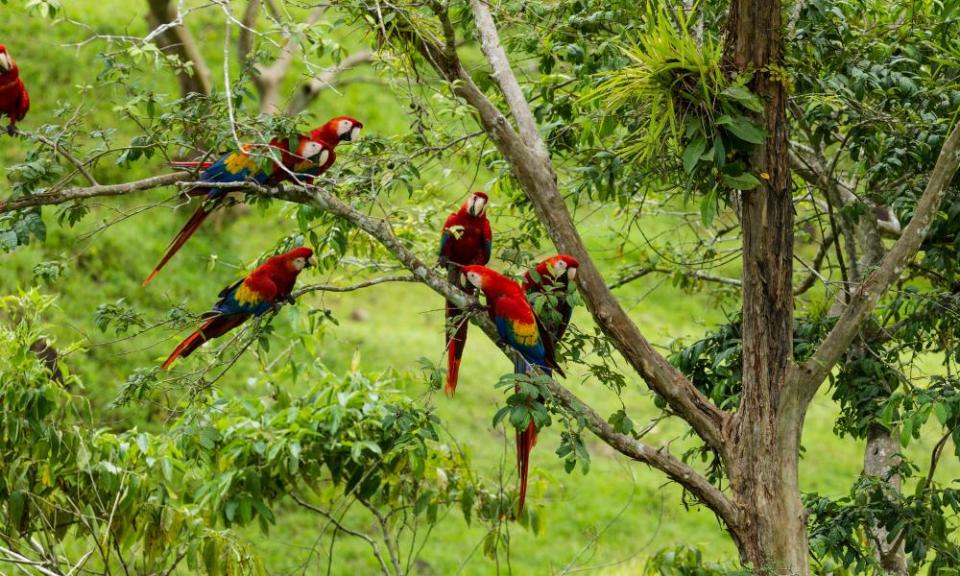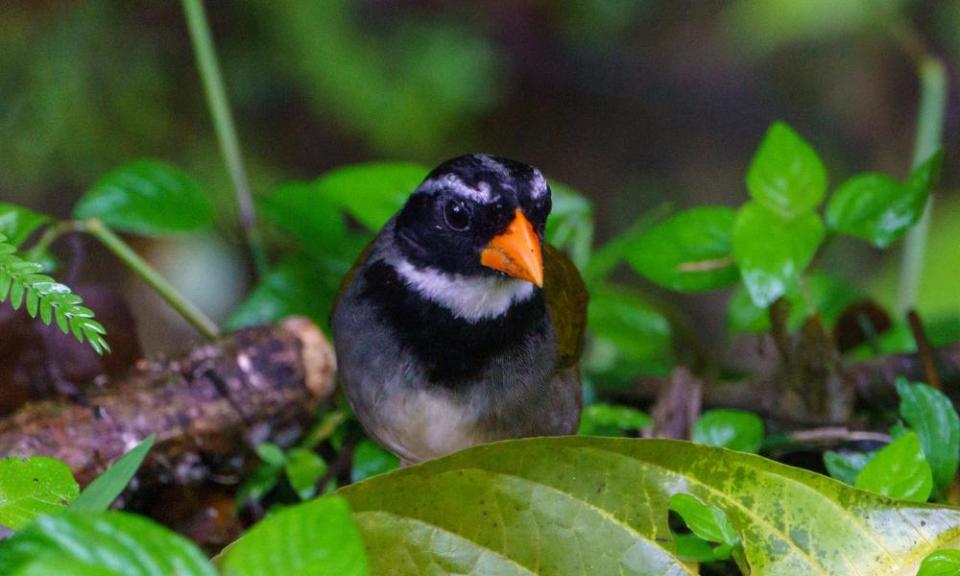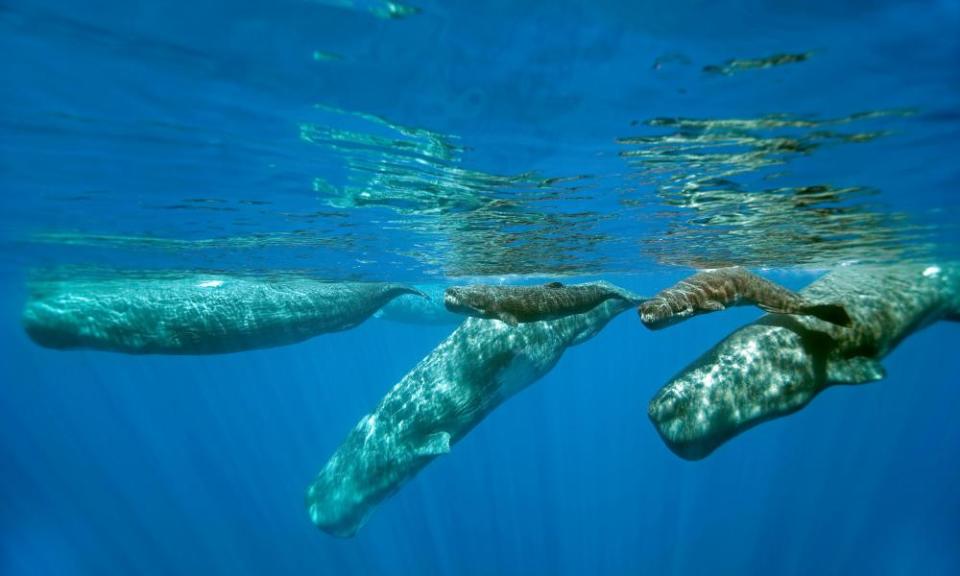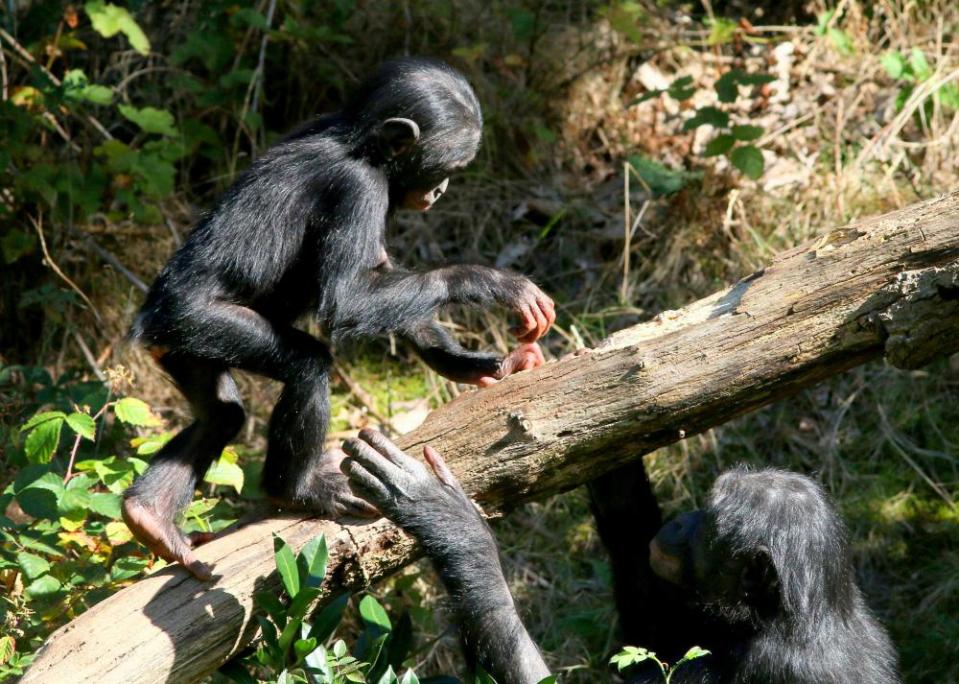The secret call of the wild: how animals teach each other to survive

Sam Williams’ Macaw Recovery Network in Costa Rica rewilds captivity-hatched fledgling scarlet and great green macaws. But introducing young birds into a complex forest world – bereft of the cultural education normally provided by parents – is slow and risky.
For 30 years or so scientists have referred to the diversity of life on Earth as “biological diversity”, or just “biodiversity”. They usually define biodiversity as operating at three levels: the diversity of genes within any particular species; the diversity of species in a given place; and the diversity of habitat types such as forests, coral reefs, and so on. But does that cover it? Not really. A fourth level has been almost entirely overlooked: cultural diversity.
Culture is knowledge and skills that flow socially from individual to individual and generation to generation. It’s not in genes. Socially learned skills, traditions and dialects that answer the question of “how we live here” are crucial to helping many populations survive – or recover. Crucially, culturally learned skills vary from place to place. In the human family many cultures, underappreciated, have been lost. Culture in the other-than-human world has been almost entirely missed.
We are just recognising that in many species, survival skills must be learned from elders who learned from their elders. Until now, culture has remained a largely hidden, unrecognised layer of wild lives. Yet for many species culture is both crucial and fragile. Long before a population declines to numbers low enough to seem threatened with extinction, their special cultural knowledge, earned and passed down over long generations, begins disappearing. Recovery of lost populations then becomes much more difficult than bringing in a few individuals and turning them loose.
Many young birds learn much by observing their parents, and parrots probably need to learn more than most. Survival of released individuals is severely undermined if there are no free-living elder role models. Trying to restore parrot populations by captive breeding is not as easy as training young or orphaned creatures to recognise what is food while they’re in the safety of a cage – then simply opening the door. “In a cage,” Williams says, “you can’t train them to know where, when and how to find that food, or about trees with good nest sites.” Parents would normally have done exactly that.
A generational break in cultural traditions hampered attempts to reintroduce thick-billed parrots to parts of south-west America, where they’d been wiped out. Conservation workers could not teach the captive-raised parrots to search for and find their traditional wild foods, skills they would have learned from parents.
Landscapes, always complex, are under accelerated change. Culture enables adaptation far faster than genes alone can navigate hairpin turns in time. In some places, pigeons and sparrows have learned to use motion-sensors to get inside enclosed shopping malls and forage for crumbs. Crows have in some locales learned to drop nuts on the road for cars to crack. In at least one area they do this at intersections, so they can safely walk out and collect their cracked prizes when the light turns red and the cars stop. They’ve developed answers to the new question: “How can we survive here, in this never-before world?”
Because the answers are local, and learned from elders, wild cultures can be lost faster than genetic diversity. When populations plummet, traditions that helped animals survive and adapt to a place begin to vanish.
In a scientific article on the vocabulary of larks living in north Africa and Spain titled, “Erosion of animal cultures in fragmented landscapes”, researchers reported that as human development shrinks habitats into patches, “isolation is associated with impoverishment”. They write: “Song repertoires pass through a cultural bottleneck and significantly decline in variety.”
Unfortunately, isolated larks are not an isolated case. Researchers studying South America’s orange-billed sparrow found that sparrow “song complexity” – the number of syllables per song and song length – deteriorated as humans continued whittling their forests into fragments. When a scientist replayed 24-year-old recordings of singing male white-crowned sparrows at the same location she’d recorded them, they elicited half the responses they had when first recorded. The birds’ responses show that changes in the dialect lead to changes in listener preference, a bit analogous to pop music. And as with humans, preferences can affect whether a particular bird will be accepted as a mate. White-crowned sparrows singing a local dialect become fathers of more offspring than do singers of unfamiliar dialects, indicating females prefer a familiar tune.

I’m not just talking about a few songs. Survival of numerous species depends on cultural adaptation. How many? We’re just beginning to ask such questions. But the preliminary answers indicate surprising and widespread ways that animals survive by cultural learning. Regionally different vocalisations are sometimes called “song traditions” but the more commonly used word is “dialects”. More than a hundred studies have been published on dialects in birds. And it’s not just birds but a wide array of animals Including some fish.
“Cod particularly,” said Steve Simpson of the University of Exeter, “have very elaborate calls compared with many fish.” You can easily hear differences in recorded calls of American and European Atlantic cod. “This species is highly vocal with traditional breeding grounds established over hundreds or even thousands of years.” Many fish follow elders to feeding, resting and breeding areas. In experiments, introduced outsiders who learned such preferred locales by following elders continued to use these traditional routes after all the original fish from whom they learned were gone.
Cultural survival skills erode as habitats shrink. Maintaining genetic diversity is not enough. We’ve become accustomed to a perilous satisfaction with precariously minimal populations that not only risk genetic viability of populations but almost guarantee losing local cultural knowledge by which populations have lived and survived.

In all free-living parrots that have been studied, nestlings develop individually unique calls, learned from their parents. Researchers have described this as “an intriguing parallel with human parents naming infants”. Indeed, these vocal identities help individuals distinguish neighbours, mates, sexes and individuals; the same functions that human names serve.
Williams tells me that when he studied Amazon parrots, he could hear differences between them saying, essentially, “Let’s go”, “I’m here, where are you?” and “Darling, I just brought breakfast”. Researchers who develop really good ears for parrot vocalisation and use technology to study recordings show that parrot noise is more organised and meaningful than it sounds to beginners like me. In a study of budgerigars, for instance, birds who were unfamiliar with each other were placed together. Groups of unfamiliar females took a few weeks for their calls to converge and sound similar. Males copied the calls of females. Black-capped chickadees flock members’ calls converge, so they can distinguish members of their own flock from those of other flocks. The fact that this happens, and that it takes weeks, suggests that free-living groups must normally be stable, that groups have their own identity, and that the members identify with their group.
Group identity, we see repeatedly, is not exclusively human. Sperm whales learn and announce their group identity. Young fruit bats learn the dialects of the crowds they’re in. Ravens know who’s in, who’s out. Too many animals to list know what group, troop, family or pack they belong with. In Brazil, some dolphins drive fish toward fishermen’s nets for a share of the catch. Other dolphins don’t. The ones who do, sound different from the ones who don’t. Various dolphin groups who specialise in a food-getting technique won’t socialise with other groups who use different techniques. And orca whales, the most socially complex non-humans, have layered societies of pods, clans and communities, with community members all knowing the members of all their constituent pods, but each community scrupulously avoiding contact with members of another community. All this social organisation is learned from elders.

Elders appear important for social learning of migratory routes. Various storks, vultures, eagles and hawks all depend on following the cues of elders to locate strategic migration flyways or important stopover sites. These could be called their migration cultures. Famously, conservationists have raised young cranes, geese and swans to follow microlight aircraft as a surrogate parent on first migrations. Without such enculturation, they would not have known where to go. The young birds absorbed knowledge of routes, then used them in later seasons on their own self-guided migrations. Four thousand species of birds migrate, so Andrew Whiten of the University of St Andrews in Scotland speculates that following experienced birds may be an underappreciated but “very significant realm of cultural transmission”.
When you look at free-living animals, you don’t usually see culture. Culture makes itself visible when it gets disrupted. Then we see that the road back to reestablishing cultures – the answers to the questions of “how we live in this place” – is difficult, often fatal.
Young mammals too – moose, bison, deer, antelope, wild sheep, ibex and many others – learn crucial migration routes and destinations from elder keepers of traditional knowledge. Conservationists have recently reintroduced large mammals in a few areas where they’ve been wiped out, but because animals released into unfamiliar landscapes don’t know where food is, where dangers lurk, or where to go in changing seasons, many translocations have failed.
Williams describes his procedure with the macaws as “very much a slow release”. First his team trains the birds to use a feeder. With that safety net, they can explore the forest, gain local knowledge, begin dispersing and using wild foods.
Some rescue programmes declare success if a released animal survives one year. “A year is meaningless for a bird like a macaw that doesn’t mature until it’s eight years old,” says Williams.
I ask what they’re doing for those eight long years.
“Social learning,” Williams replies immediately. “Working out who’s who, how to interact, like kids in school.”

To gain access to the future, to mate and to raise young, the birds Williams is releasing must enter into the culture of their kind. But from whom will they learn, if no one is out there? At the very least they must be socially oriented to one another. Ex-pets are the worst candidates for release; they don’t interact appropriately with other macaws, and they want to hang around near humans.
To assess the social abilities of 13 scarlet macaws who were scheduled for release, Williams and his crew documented how much time they spent close to another bird, how often they initiated aggression, things like that. When the bird scoring lowest for social skills was released, he flew out the door and was never seen again. The next-to-lowest didn’t adapt to the free-living life and had to be retrieved. The third-lowest social scorer remained at liberty but stayed alone a lot. The rest did well.
All of the above adds up to this: a species isn’t just one big jar of jellybeans of the same colour. It’s different smaller jars with differing hues in different places. From region to region, genetics can vary. And cultural traditions can differ. Different populations might use different tools, different migration routes, different ways of calling, courting and being understood. All populations have their answers to the question of how to live where they live.
“Sometimes a group will be foraging in a tree,” Williams says. “A pair will fly overhead on a straight path. Someone will make a contact call, and the flying birds will loop around and land with the callers. They seem to have their friends.” Bottom line, said Williams, there is much going on in the social and cultural lives of his macaws and other species, much that they understand – but we don’t. We have a lot of questions. The answers must lurk, somewhere, in their minds.
As land, weather and climate change, some aspects of cultural knowledge will be the tickets necessary for boarding the future. Others will die out. Across the range of chimpanzees, cultures vary greatly, as do habitats. All populations but one use stick tools. Some use simple probes, others fashion multi-stick toolsets. Only one population makes pointed daggers for hunting small nocturnal primates called bush-babies hiding in tree holes. Only the westernmost chimpanzees crack nuts with stones.
As researchers have noted, distinctive tool-using traditions at particular sites are defining features of unique chimpanzee cultures. Whiten wrote: “Chimpanzee communities resemble human cultures in possessing suites of local traditions that uniquely identify them … A complex social inheritance system that complements the genetic picture.”
Some chimpanzee populations have learned to track the progress of dozens of specific trees ripening in their dense forests. Others live in open semi-savannah. Some are more aggressively male-dominated, some populations more egalitarian. Some almost never see people; some live in sight of human settlements and have learned to crop-raid at night. For a long, long time chimpanzees have been works in progress. “We’ve learned,” writes Craig Stanford, “not to speak of ‘The Chimpanzee’.” Chimpanzees vary and chimpanzee culture is variable at every level.

“It’s not just the loss of populations of chimps that worries me,” Cat Hobaiter emphasised when I spent several weeks with her studying chimpanzees in Uganda. “I find terrifying the possibility of losing each population’s unique culture. That’s permanent.”
Diversity in cultural pools – perhaps more crucially than in gene pools – will make species survival more likely. If pressures cause regional populations to blink out, a species’ odds of persisting dim.
Williams’ goal is to re-establish macaws where they range no longer, in hopes that they, and their forests, will recover. (Most of the central American forests that macaws need have been felled and burned, largely so fast-food burger chains can sell cheap beef.) It often takes a couple of generations for human immigrant families to learn how to function effectively in their new culture; it may take two or three generations before an introduced population of macaws succeeds. In other words, macaws are born to be wild. But becoming wild requires an education.
So what’s at stake is not just numbers. What’s at stake is: ways of knowing how to be in the world. Culture isn’t just a boutique concern. Cultural knowledge is what allows many populations to survive. Keeping the knowledge of how to live in a habitat can be almost as important to the persistence of a species as keeping the habitat; both are needed. Cultural diversity itself is a source of resilience and adaptability to change. And change is accelerating.
This is an edited extract from Becoming Wild: How Animals Learn to be Animals by Carl Safina, which published in the UK by Oneworld on 9 April and in the US by Henry Holt and Co on 14 April

 Yahoo News
Yahoo News 